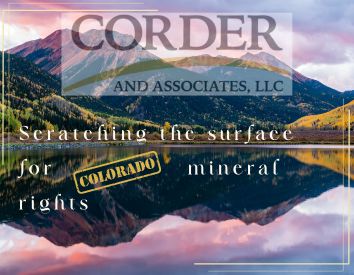Colorado’s mineral rights follow closely with those of Wyoming and Montana. Mineral rights are defined as an interest in the minerals in the land together with a right to enter upon land and extract the minerals or a right to receive a royalty from the extraction of the minerals. Mineral rights can include some or all of the minerals. Surface rights refer to the rights of the land. There can be a severance of mineral interests. The land owner can be different than the owner of the mineral rights. The severed estate will have separate chains of title for each estate. The federal or state government may have reserved some or all of the mineral estate when the property was first granted into private ownership.
So, you’ve found a perfect piece of property in Colorado for sale and want to purchase. How do you know who owns the mineral rights? A good starting point would be to check with the county clerk and recorder about where the property is located for any references to mineral estates on the deed. These documents may not show the current owner of the mineral rights, and the next step would be to check with the Colorado Oil and Gas Conservation Commission, as they are likely to provide more information about the current ownership of the mineral rights. It’s also highly recommended to confer with a real estate attorney specializing in this law area.
The State Land Board owns 3,990,000 acres of mineral estate. When Colorado was introduced to statehood in 1876, the state received the acreage. There are currently 990 active oil and gas leases covering approximately 400,000 acres of mineral estate.
If you dream about property in Colorado, contact Corder and Associates, your trusted real estate experts! We can professionally guide you through the process and keep you informed every step of the way!




